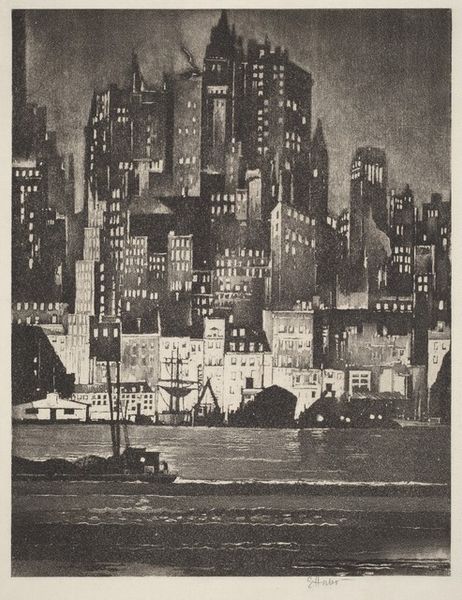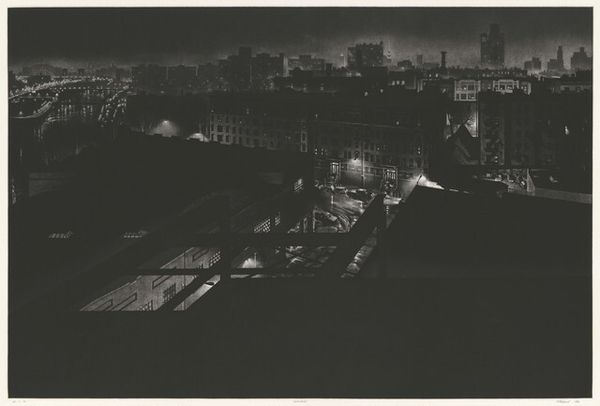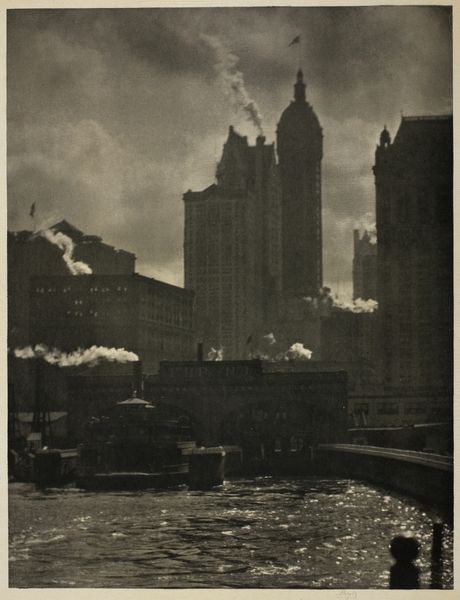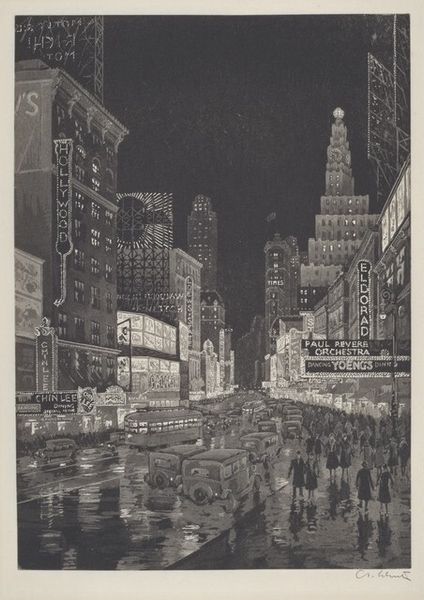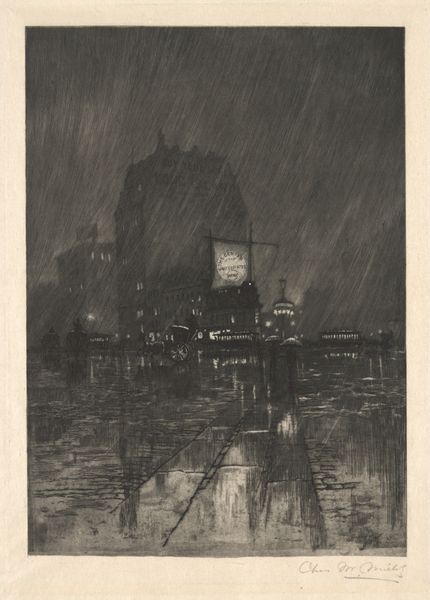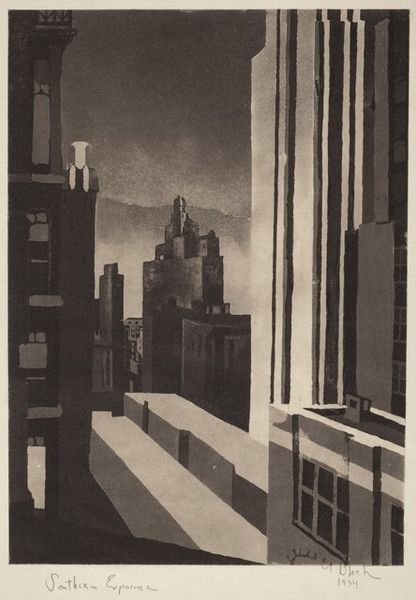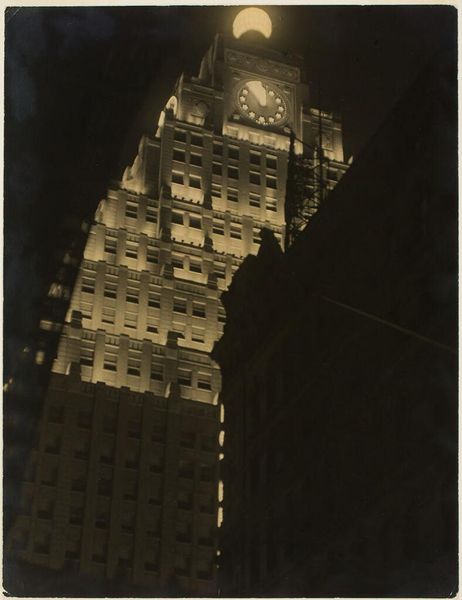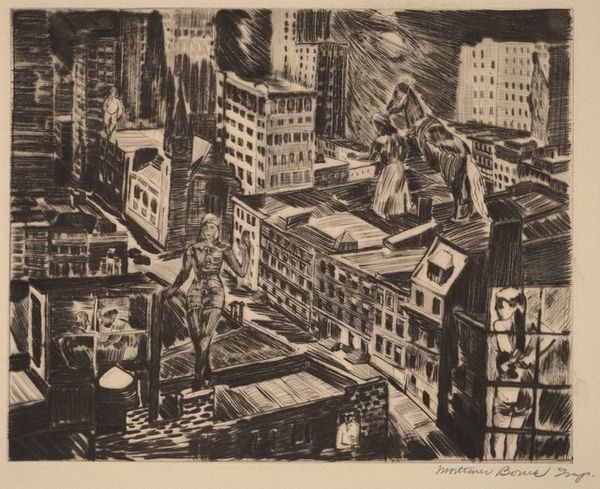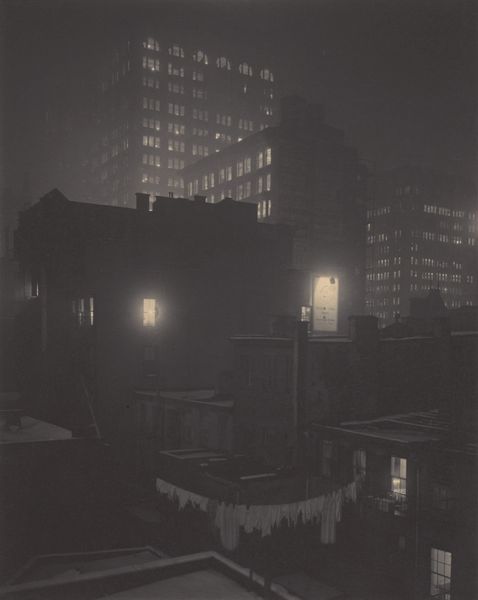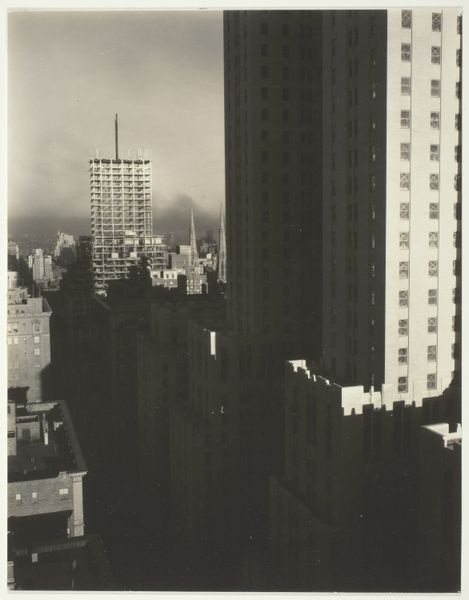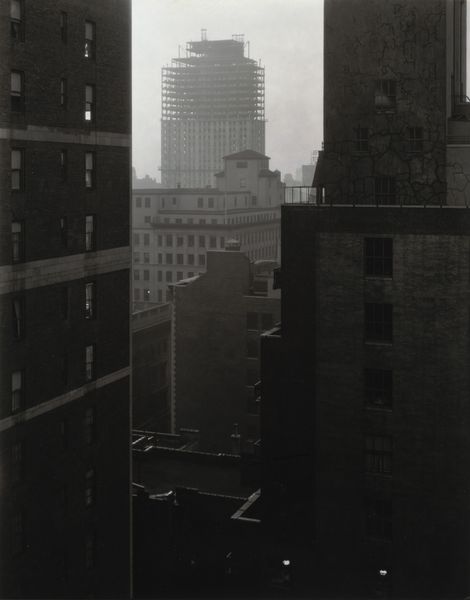
print, photography, gelatin-silver-print
# print
#
outdoor photography
#
photography
#
gelatin-silver-print
#
cityscape
#
modernism
Dimensions: image: 602 x 899 mm paper: 752 x 1069 mm
Copyright: National Gallery of Art: CC0 1.0
Curator: Craig McPherson's "F.D.R. Drive," a gelatin-silver print from 1993, presents a stark cityscape. What strikes you most upon first viewing? Editor: Its overwhelming darkness. There's a sense of veiled mystery, an almost film-noir mood evoked by the contrasts of light reflecting on the water and disappearing into the opaque sky. Curator: That resonates. This photograph, though ostensibly a cityscape, moves beyond simple representation. We might interpret it as an exploration of urban isolation. The date is important—think of early 90s New York City: financial crises, questions about community. Editor: Absolutely. The almost oppressive quality, combined with the recurring image of bridges. In cultural imagery, bridges are frequently thresholds, crossings between states. Is there an implied social commentary here, do you think? Is this barrier or possibility? Curator: It pushes us to consider how urban infrastructure, intended to connect, can also divide. Consider, also, how this photograph, rendered in such stark monochrome, strips away the vibrant visual markers usually associated with city life. Whose access is restricted? Where do communities form and dissipate? The absence becomes as powerful as the presence. Editor: And the light. Consider what those scattered islands of light within the photograph mean. Lights are a symbol of knowledge, safety, truth, divinity - yet they're small in comparison with the space that remains untouched by them. A struggle for control perhaps, or perhaps these small beacons represent our hopes of making a safe home in our chaotic cities. Curator: A potent observation. Looking through a contemporary lens, it encourages questions around gentrification, urban planning, and environmental justice. Whose city is this? And for whom is it built? The symbolic loading behind McPherson's work here presents an image with many potential access points, encouraging conversations that continue through today. Editor: Indeed. This photograph serves as a poignant meditation on the modern urban experience. It uses a carefully selected visual vocabulary that generates introspection about the narratives we construct through and against symbolic language in our cityscapes.
Comments
No comments
Be the first to comment and join the conversation on the ultimate creative platform.
